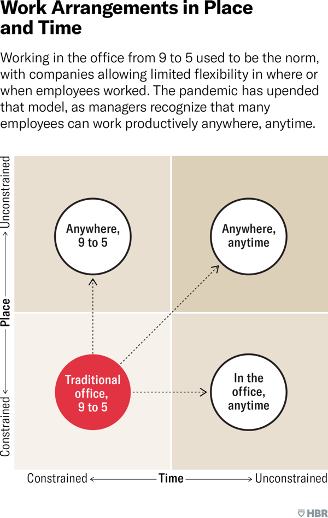Table of Contents

Workplaces have been slowly moving towards a flexible model for some time now. This is especially the case in the SaaS world.
Just a few years ago, nearly half of workers were already working from home some of the time. Due to the pandemic and government lockdowns, companies were made to pivot to remote-only very quickly.
Now, many organizations are working on plans to build hybrid workplaces that won’t hurt productivity or employee engagement but will give employees the flexibility they demand.
Leaders will need to adjust their way of thinking about managing and teamwork to lead a hybrid team successfully in a post-pandemic world. In this article we’ll discuss what a hybrid team is, some pros and cons of a hybrid workforce, and share four tips for all leaders looking to make the shift for good.
Let’s go!
If you lead a hybrid team, our bet is you’ll need the right tools to be successful. Especially with monitoring your metrics. That’s where Baremetrics comes in. Sign up for the Baremetrics free trial and start seeing more into your subscription revenues now.
What Is A Hybrid Team?
Traditionally, workplaces have expected employees to conduct work activities together from a central location. For the past year and a half, employees have been working from home or remotely rather than that central office location.
A hybridteam is one that is flexible and offers employees the choice of working from the office or remotely. The theory is that hybrid workplaces offer the best of both worlds between remote and in-office. There are, however, nuances to hybrid workplaces so it’s important to disguise the benefits and drawbacks.
Pros And Cons Of A Hybrid Workforce
Researchers have found that workers who were forced into remote situations due to the pandemic are interested in continuing to have flexible hours.
Gartner found that 70 percent of customer service employees hope to have work-from-home options in the post-pandemic world. Another survey found that nine out of 10 businesses have plans for a hybrid workplace.
Clearly there is a lot of interest among employees to have a bit of both moving forward. Having a hybrid workforce can have several benefits, such as:
- Productivity – With less time commuting and (hopefully) fewer distractions, employees have more time to focus on deep work.
- Engagement – Despite being away from the office, remote employees reported a higher level of engagement over the past several months, according to a Gallup survey.
- Empowerment – Offering flexibility and choice to employees empowers them and gives them more control over their work and career.
- Talent – Having a hybrid workplace means you can hire top talent from a distance, improving your organization’s range of skills and talent.
However, hybrid teams have their challenges. Some of the cons of having a hybrid workforce include:
- Logistics – Organizing such a widely distributed team is one of the drawbacks of hybrid workplaces. It adds an extra burden to managers. For this reason, HBR identified that a successful hybrid workplace will have “a simple way to manage the infrastructure.” Infrastructure includes simple things like ensuring everyone has the proper equipment, but also more complex management tasks like tracking productivity.
- Employee tracking – It’s easy to see if your employees are working when they are in the office, but not so when you have a hybrid team. Aside from the cost of tracking software comes the need to monitor your employees’ online activities throughout the day while they are working from home. It can change the atmosphere of the workplace, making it more hostile.
- Disconnection – There’s a chance that your in-office employees will bond, and your remote employees will start to be left out. Perhaps it is a brainstorming meeting that your in-office team members are doing. If they opt not to interrupt their creativity to start a Zoom call with the rest of the team, it could create a disconnection between co-workers.
- Motivation – Remote workers can quickly start to feel isolated and invisible. They may be overlooked for the best assignments, miss out on social gatherings and get-togethers, and be kept out of the loop regarding news and changes within the organization. All of this can lead to a big loss in motivation and engagement, leading to higher turnover rates among your team.
4 Actions All Leaders Need To Take To Lead Hybrid Teams
There’s no blueprint for leaders on how to effectively manage a hybrid team or workplace. We’re in a trial and error phase and there are still kinks to be worked out before best practices have been established.
For this reason, you’ve probably seen the headlines of Goldman Sachs CEO, David Solomon, calling remote work an “aberration” and not conducive to productive work. Companies want to go back to the way it was because they knew it worked. But the trend to hybrid work continues to rise so leaders that want to get ahead need to know how to lead hybrid teams.
Here are some ways that managers can successfully lead hybrid teams.
1. Build an inclusive environment
McKinsey defines inclusion in the workplace as “the degree to which an individual feels that their authentic selves are welcomed at work, enabling them to contribute in a meaningful and deliberate manner.”
Building an inclusive workplace is paramount to leading hybrid workplaces. Employees, wherever they are, need to feel like they’re on a level playing field. They need to know they have a voice and are heard by their leaders. Without it, productivity will plummet and employees will leave.
How can we build inclusive hybrid workplaces? We can start with practical things like having everyone on team meetings use Zoom even if some are in the same office together. It also includes higher-level initiatives like making sure your workplace doesn’t favor in-office employees over remote ones, by making use of a cloud-based service desk software that employees go to seek help internally with IT systems, HR questions, or other business issues.
A Stanford study found that even though people working from home were 13% more productive, they didn’t receive promotions as often as their in-office colleagues. It’s a case of “out of sight, out of mind.”
An interesting and effective example of how companies are building inclusive workplaces is through mentoring programs:
- Avison Young, a real estate company has a women’s mentoring program aimed at connecting these future leaders with executives and senior leaders across North America.
- Members of New York Life’sEmployee Resource Groups (ERGs) and are connected with leaders across North America, with the goal of bringing more opportunity to those that affiliated ERG groups in the company.
You can learn more about how companies are driving their diversity, equity and inclusion initiatives forward through mentorship on Together’s webinar on the topic.
2. Embrace flexibility
Hybrid work relies on flexible working arrangements.
Lynda Gratton, a professor of management practice at London Business School created an axis that charts how workplaces are experimenting with flexibility in either place or time in their workplace.
The image below shows the constraints and benefits of various hybrid models.

Source: Harvard Business Review
Between now and when companies find out what works best, embrace flexibility and give employees the autonomy to get their work done regardless of when and where.
One company that is finding creative ways to embrace a hybrid workplace is Wex, a payment solutions provider. Their VP of human resources, Sherry Olsen shared with Webex’s Future of Work column that they’re changing their offices to be more about collaboration.
By making the office a place for camaraderie and connection, employees are more open to coming back to the office. In her words, “[t]hey want to be connected, and be flexible.”
3. Keep tabs on your people
In a hybrid working model, it can be easy to set priorities or objectives with remote employees and forget about checking in with them.
Having 1:1 meetings that aren’t about immediate work can refresh employees and remind them that they’re part of a team and their work is valued. Sometimes this is best done by someone who isn’t their immediate manager because conversations can easily revert back to the work at hand.
Providing mentoring opportunities – by either connecting them with more experienced employees or peer-to-peer learning – can create space for conversations not directly related to the day-to-day objectives.
We spoke with two managers at a famous gallery in Dublin about their mentoring relationship. When speaking with the mentee, they shared how they felt about connecting with another colleague outside of a direct work project:
“We’ve worked together for almost 2 years, but it was very interesting to talk more deeply about our personal and working history. We discovered that we share similar professional experiences and I expressed some of my professional concerns. We both think about mentoring as a two-way relationship. I’m really Looking forward to our next session.”
Conversations like these are a great way to build a strong hybrid workplace culture. They can talk about their goals, ambitions, and challenges with someone else who they may not talk to as regularly. These conversations can be rejuvenating for remote and in-office employees alike.
Build Successful Hybrid Teams
Get deep insights into MRR, churn, LTV and more to grow your business
4. Acknowledge and recognize hard work
Appreciation and acknowledgment are essential for employees to feel valued at work.
Traditionally recognition has come in the form of raises, bonuses, and paid time off. But those are not the only way to say thank you to staff. Handwritten notes and cards, gifts, and praise in front of co-workers can also make an employee feel appreciated.
Managers of hybrid teams will need to be encouraged to recognize the hard work of their hybrid team members. Without some acknowledgment, employees may start looking for employment elsewhere to feel valued. Having a strong culture is essential for hybrid workplaces, and it begins with small things like genuine recognition for a job well done.
As a leader of a hybrid team, what are some ways you can make your employees feel valued?
Here are three ways:
1. Start a “small wins” Slack or Teams channel. You should actively look for opportunities to openly praise employees. And not just when it’s a big achievement. A dedicated space to recognize the “small wins” keeps things casual and gives you an opportunity to recognize exemplary behaviour.
2. Connect them with executives. We know that remote employees can feel isolated. Make them feel more part of something bigger by connecting them with a role model in the organization they wouldn’t normally work with. Give them resources to have conversations that are focused on their goals and ambitions.
3. Share with them the recognition they get from others. Go to the managers of high potential remote employees. Ask them to share some strengths or recent wins they’ve had. Take what their manager shares with you and connect with them individually to congratulate them or recognize their hard work. When done in a 1-on-1 setting it can mean a lot to them to hear praise directly from a CEO or executive. It shows them that their manager is clearly sharing positive feedback about them to you.
Building Successful Hybrid Teams
Hybrid workplaces aren’t something to “deal with.” They’re something to embrace.
Today’s world presents a great opportunity for leaders to lean into what top talent is demanding – more flexibility – while also getting more productivity from them.
Let’s be real though – the underlying challenge that hybrid teams face is fostering connection and combating feelings of isolation. The best way leaders can do this is through mentoring programs. Mentoring programs connect colleagues across departments and teams to encourage conversations that lead to professional development and growth.
We saw above how Avison Young and New York Life both run internal mentoring programs to support DE&I initiatives. But many companies from all industries – from tech companies like Airbnb, to retail brands like 7-11, to consulting firms like Randstad – use mentoring for a myriad of objectives.
Companies use mentoring to:
- Retain and prepare high potential employees for leadership positions.
- Attract and onboard new hires more effectively.
- Support remote workplaces and build cultures of inclusion.
- Increase employee engagement.
Encouraging mentoring relationships among employees is good for them and for the business. Research has shown that employees who are mentored have a better career track than those who don’t. Likewise, employees who receive mentoring are more engaged. Starting a remote mentoring program is critical for hybrid employees to feel connected and continue to grow.
If you lead a hybrid team, our bet is you’ll need the right tools to be successful. Especially with monitoring your metrics. That’s where Baremetrics comes in.
Baremetrics is a business metrics monitoring tool that acts as a dashboard for your business. You can see MRR, ARR, LTV, total customers, and more directly in your dashboard. Connect Baremetrics to your revenue sources, and start seeing all of your revenue in a crystal-clear dashboard. You can even see your customer segmentation, deeper insights about who your customers are, forecast into the future, and use automated tools to recover failed payments.
Sign up for the Baremetrics free trial and start seeing more into your subscription revenues now.


